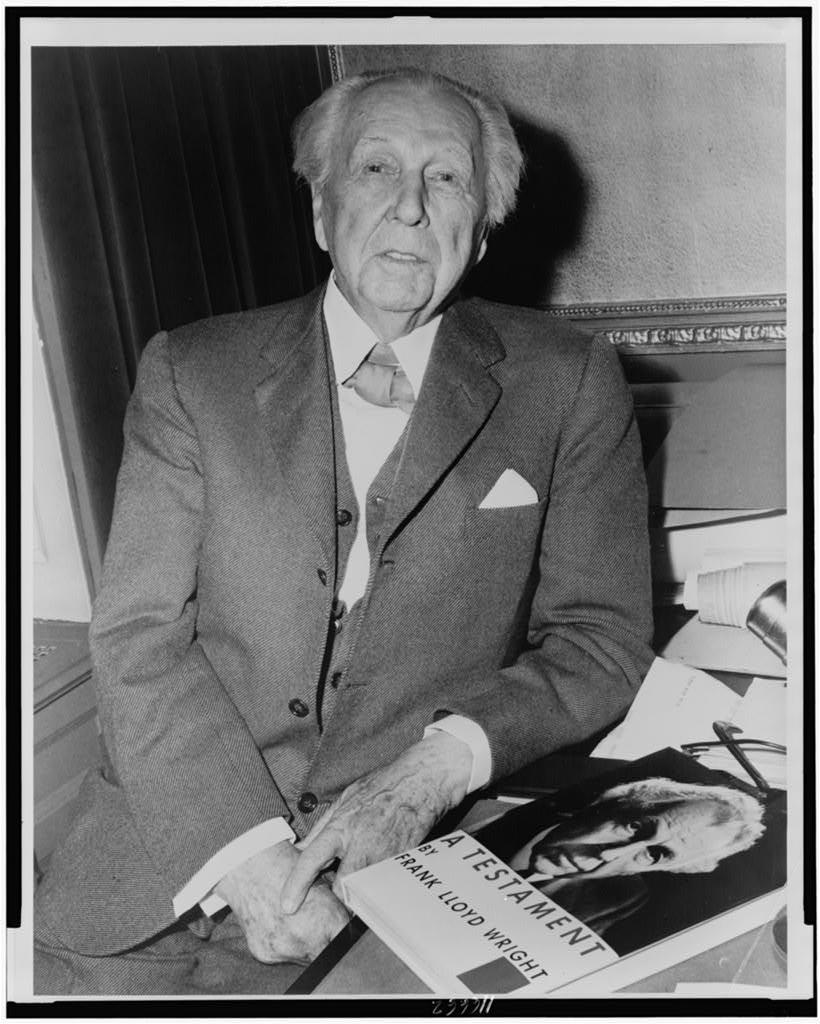
After Fallingwater, the 70-year-old architect began an active period that produced some of his best work. Suddenly, commissions poured in, and without worrying about overextending himself, Wright accepted each one. His professional reputation, which for years had been obscured by his personal life, grew in prominence again. Personal characteristics once considered immature—such as a high opinion of himself and a willingness to ratchet up the projected cost of any building—were now seen as an extension of his eccentric genius. Wright basked in the attention and set out in 1936 to build a number of $5,000 Usonian houses. These houses were an attempt to produce a well-designed, low-cost dwelling that average Americans could buy. (Of course, like most of his projects, they went over budget and cost about $10,000 each.) Only 60 Usonian houses were ever built.
An Autobiography
By Frank Lloyd Wright
f form really followed function—it did in a material sense by means of this ideal of plasticity, the spiritual concept of form and function as one—why not throw away the implications of post or upright and beam or horizontal entirely? Have no beams or columns piling up as “joinery.” Nor any cornices. Nor any “features” as fixtures. No. Have no appliances of any kind at all, such as pilasters, entablatures and cornices. Nor put into the building any fixtures whatsoever as “fixtures.” Eliminate the separations and separate joints. Classic architecture was all fixation-of-the-fixture. Yes, entirely so. Now why not let walls, ceilings, floors become seen as component parts of each other, their surfaces flowing into each other. To get continuity in the whole, eliminating all constructed features just as Louis Sullivan had eliminated background in his ornament in favor of an integral sense of the whole. Here the promotion of an idea from the material to the spiritual plane began to have consequences. Conceive now that an entire building might grow up out of conditions as a plant grows up out of soil and yet be free to be itself, to “live its own life according to Man’s Nature.” Dignified as a tree in the midst of nature but a child of the spirit of man.
I now propose an ideal for the architecture of the machine age, for the ideal American building. Let it grow up in that image. The tree.
© Frank Lloyd Wright Foundation
ncG1vNJzZmivp6x7sa7SZ6arn1%2Bgsq%2Bu1KulrGeWp66vt4ylo6ixlGLEs7XGoatoraOku6qtzWafqK2jmnqnvsCnog%3D%3D